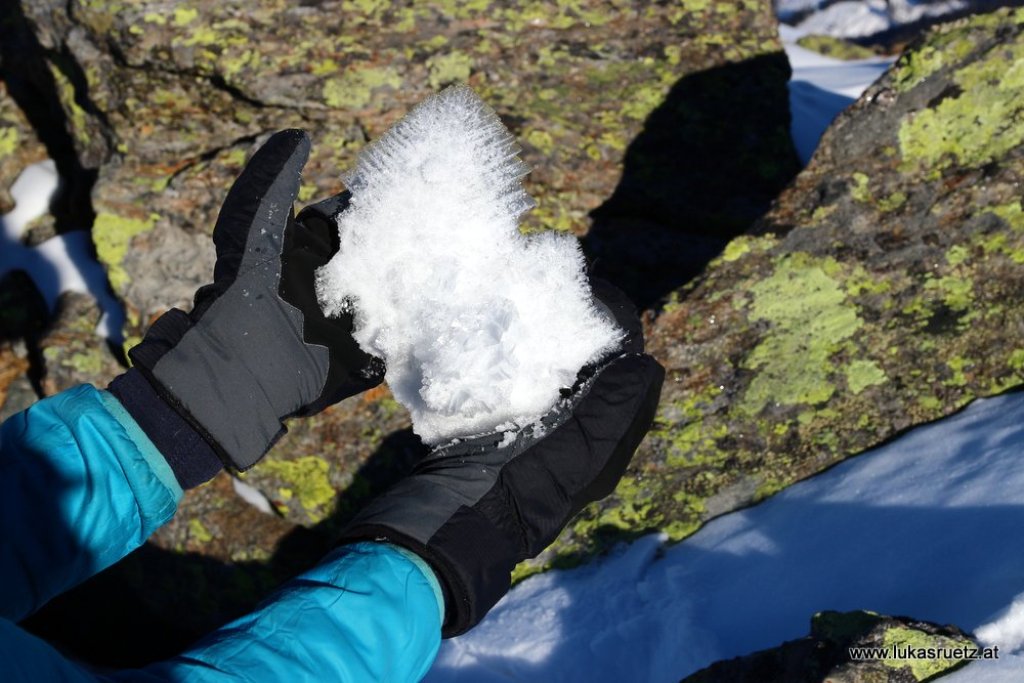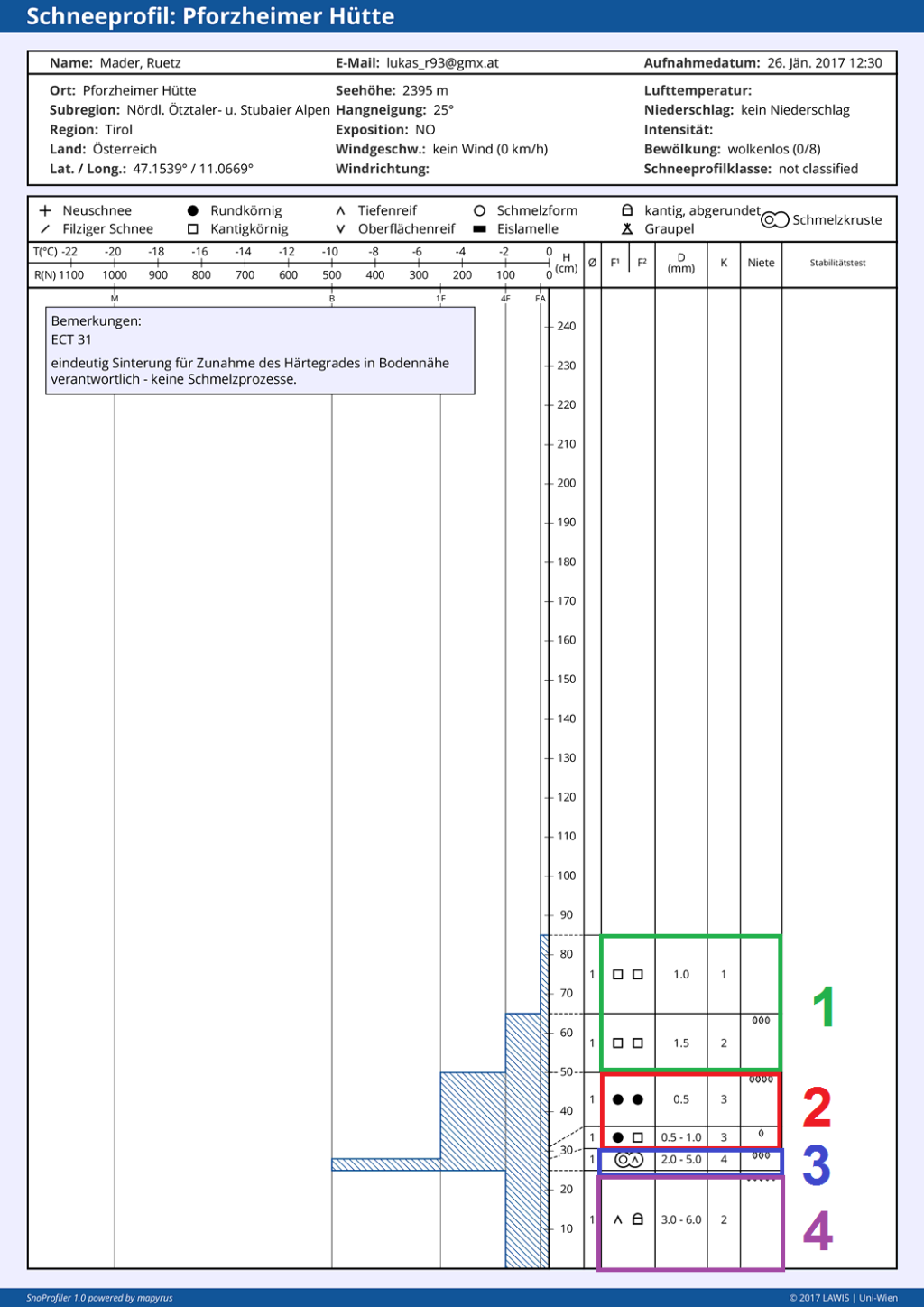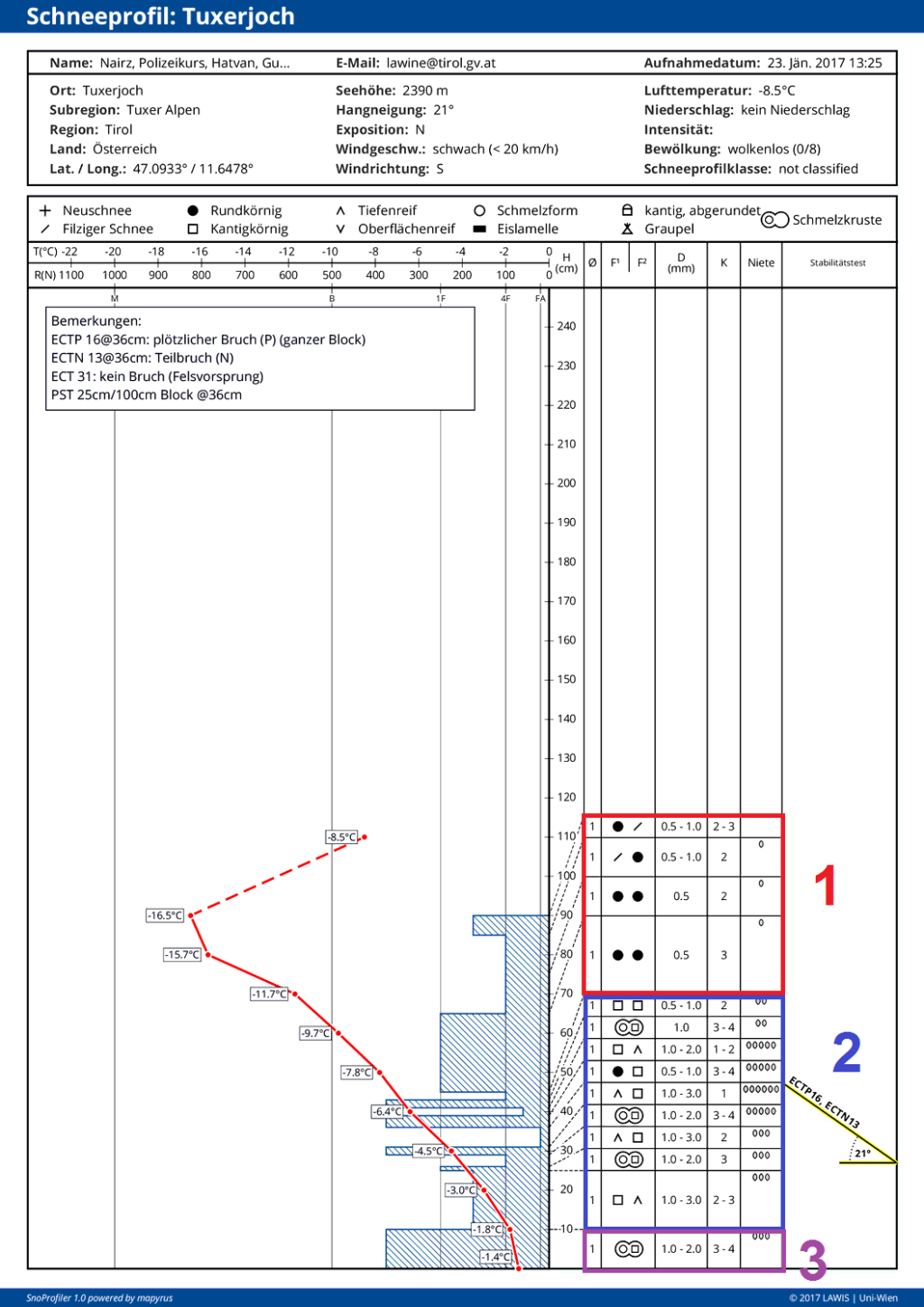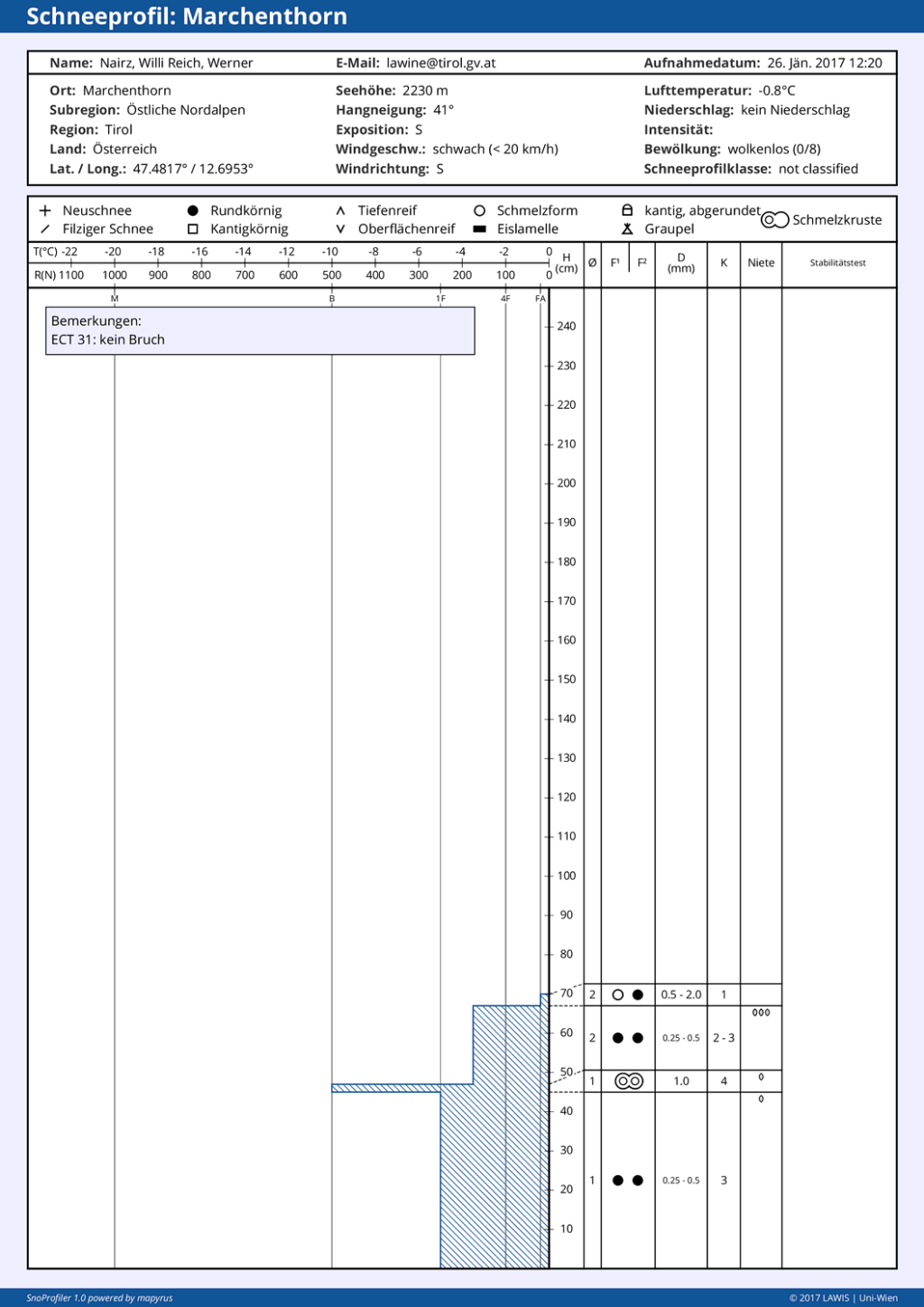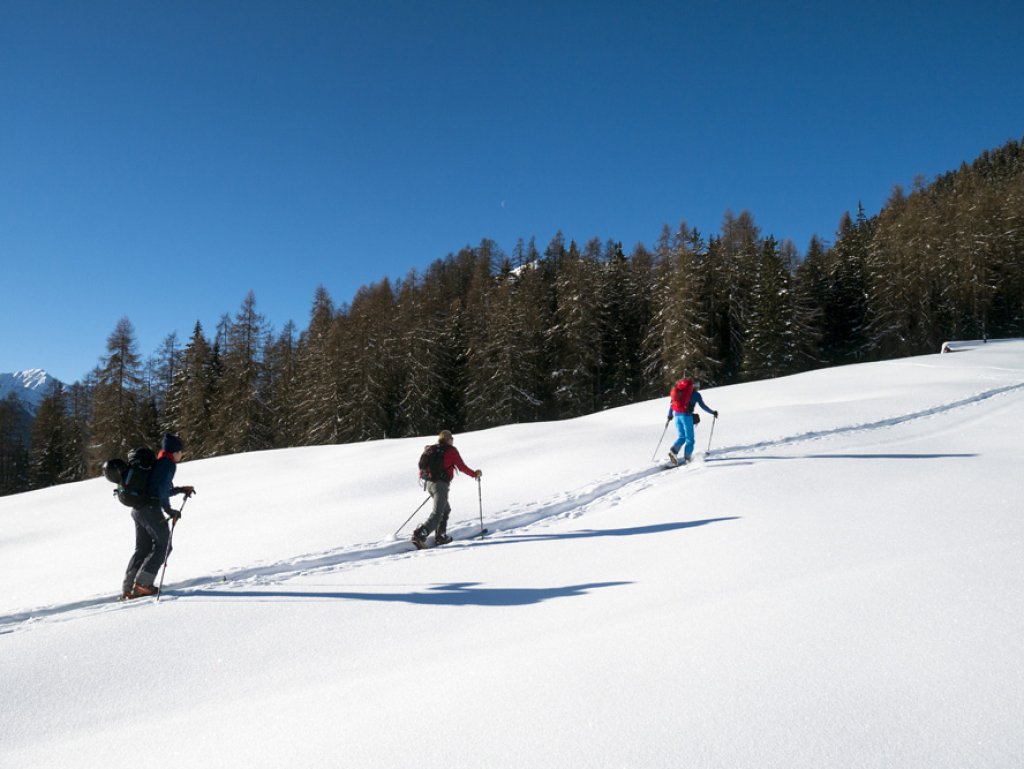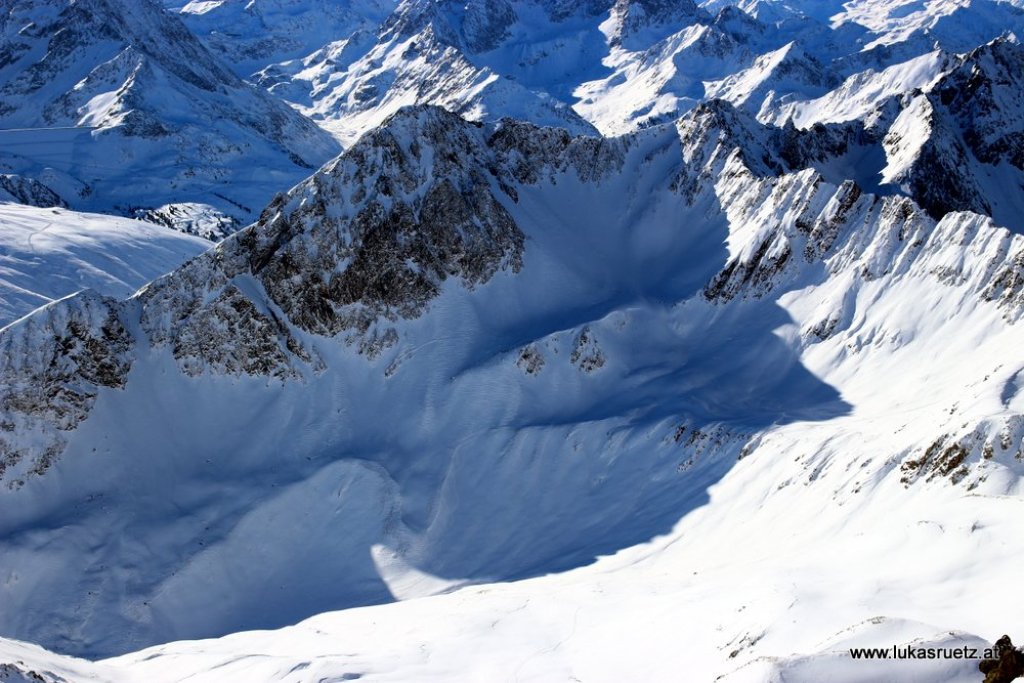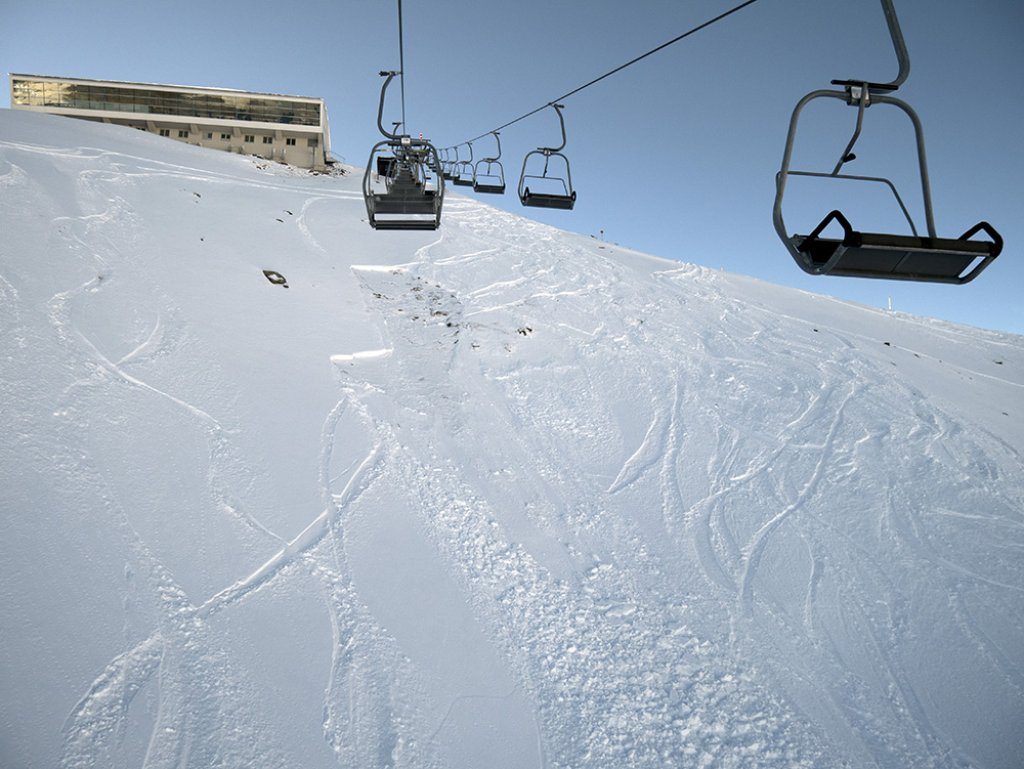Profile Pforzheimer Hütte (Stubai Alps) from 26.1.2017
We see four main areas, distributed over a snow depth of 85cm. The superficial layers (1) consist only of angular crystals - in other words, they have been transformed to build up but are not yet in the form of floating snow. These crystal forms were created during the radiation nights, i.e. the cloudless nights of the last few days, when the snow surface was able to cool down massively due to the heat radiation emitted. As a result, a strong temperature gradient develops, especially near the surface. The snow lying there begins to become looser, i.e. it begins to build up.
This layer feels similar to powder snow when tracking and skiing, but trickles much more strongly and hisses characteristically when swinging. As a rule, you sink even further and more easily than in fresh powder snow. It is highly likely that the initial product before the transformation was powder snow, but it could also have been drift snow (round grains) that became increasingly loose. Due to the cloudless nights and the resulting build-up transformation of layers near the surface, the tensions decrease (the differences in hardness between the loose, weak layers near the ground and the harder layers near the surface become smaller) and the risk of avalanches decreases.
Below this is an area of degradationally transformed snow (2), i.e. round-grain forms. This can be old drift snow or simply fresh snow that has since undergone degradation. Areas 1 & 2 are the new snow since the beginning of January, areas 3 & 4 come from the snowfall in autumn and were mainly transformed during the warm and dry period in December.
Area 3 is a melting crust with a grain size of 2 to 5 millimetres and a hardness grade of 4 (blue bar to the left of the height indication shows the hardness grade). This means that it can no longer be penetrated with a finger, but only with a pencil. To the right of the spectacle symbol of the melting crust is also the symbol for "deep rime, floating snow" - the upright V. This means that the crust "is being or has been eaten up" - i.e. the melt lumps are being changed by the build-up transformation. The crust represents the old snow surface up to the snowfall at the beginning of January.
